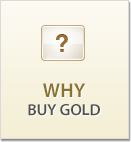ETFs, or exchange-traded funds, offer the option of investing in gold without holding physical bullion. ETFs are traded on major stock exchanges, just like a single stock of any company, and aim to track gold prices. The first gold exchange-traded products appeared in the 1960s; today, they are becoming increasingly popular as a way to invest in precious metals.
Each share – or “lot”– of an ETF represents a particular amount of gold. For example, one share of a gold ETF may represent one 1/10 troy ounce gold unit. Under an ETF, a trust owns the gold ,and you are a beneficiary of a debt owned by the trust, and backed by this gold.
The largest gold-backed ETFs include the SPDR Gold Trust (GLD), iShares COMEX Trust (IAU). Each gold fund has a different method for tracking gold. They may use derivative contracts or hold physical gold; it is common for a gold ETF to hold gold bullion, in the form of Good Delivery bars, stored in a depository. With gold ETFs, you are buying a share in a particular store of gold.
However, instead of buying the gold bullion directly, it is held in a depository, along with the gold assigned to other shares of the same fund. Most ETFs do not allow investors to withdraw their share of gold. Instead, this method of investment is used by investors who do not expect to take possession of their physical gold.
Fees
ETFs usually charge a percentage-based commission according to the stockbroker you choose, along with an annual storage fee. The annual expenses of the funds – such as insurance, gold storage, and fund management – are charged by selling a small amount of the gold represented by each share. As a result, the amount of gold backing each share in the fund declines gradually over time.
Taxes
In some cases, investing in an ETF can be a way to avoid the taxes due when investing in gold bullion. In the United States, sales of gold ETFs are treated the same as sales of gold bullion, and therefore are taxed at the 28% capital gains rate that would apply to the sale of gold coins or bars.
Advantages
There are several advantages to investing in gold ETFs. First, they are backed by physical gold. Second, they allow investment in very small quantities – with one share equal to approximately one gram of gold. Since it can be purchased in small quantities, it is possible to accumulate gold through small investments over a period of time.
Even when buying small quantities, ETFs offer near-wholesale prices, compared to the significant premium when buying small amounts of physical gold. There is no storage issue, unlike when owning physical gold coins and bullion.
Disadvantages
If you are seeking to own physical gold, a gold ETF may not be right for you. At no time do you actually own a gold coin or bullion bar. Gold ETFs are made up of contracts and derivatives, and are redeemable for cash, not gold itself. Still, exchange-traded funds have become a popular option for investors who want to invest in gold without the challenges associated with physical storage.





